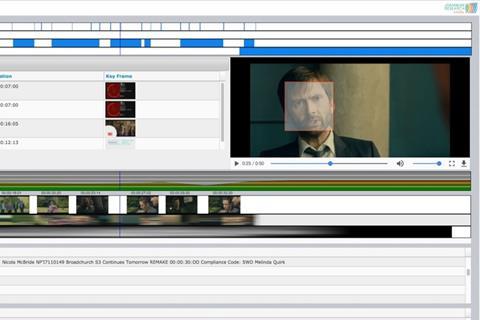A consortium of European technology firms demonstrated a working prototype of a video analysis system at NAB.
The software from the Realtime Content Analysis and Processing (ReCap) team will automatically analyse and extract time-stamped, descriptive and technical metadata from live broadcast-quality video and archive content.
The ReCap consortium
The ReCAP consortium project is partially funded by a €1 million grant from Horizon 2020, a European Union fund that supports making technology commercially available and affordable for small to medium-size enterprises. It is made up of:
- NMR British systems integrator and media technology solutions provider
- ToolsOnAir Austrian developer of applications that integrate broadcast quality ingest, playout, shared storage, and real-time graphics
- Nablet German provider of streaming, codec, muxing, and transcoding solutions
- Joanneum Research (JRS) Austrian non-profit which focuses on applied research
NMR Chief Operating Officer Alex Buchanan told IBC365 that the aim of the project is to come up with a viable product and business plan by the project’s May 2018 deadline.
He said: “We have a basic proof of concept that shows the algorithms working and analysing content. “By IBC2017 in September we would like to have an alpha product which will show the ability to take in live streams as well as files and process them in real-time and produce results and publish them to a MAM or as XML data.
“And by this time next year we will have a beta product and a more developed business plan for how we will take it to market.”
The final ReCAP product will in real-time deliver time-stamped, real-time descriptive analysis of video and audio content, including objects, logo, face detection, and content duplication.

It will also provide automatic detection of quality impairments, such as lost/frozen video frames, block dropouts, visible macroblocking, and estimation of sharpness and noise, as well as potentially automatic quality improvement, interpolation of image regions or entire frames, denoising, and block artefact suppression.
Archive enrichment
Additional ReCAP benefits include archive enrichment, such as identifying objects, locations, duplicate or similar content; identifying logos and on-screen text (OCR); and automatic speech-to-text (ASR) to search for content.
A stakeholder board comprised of broadcasters, news organisations, and content owners is providing feedback and guidance in a bid to make sure the final product meets the industry’s need for automatic media content analysis and that it satisfies real world use cases and workflow challenges.
“We are business case driven,” added Buchanan, who gave the example of owners of large amounts of archive content or those involved in compliance as potential users of the system.



























No comments yet